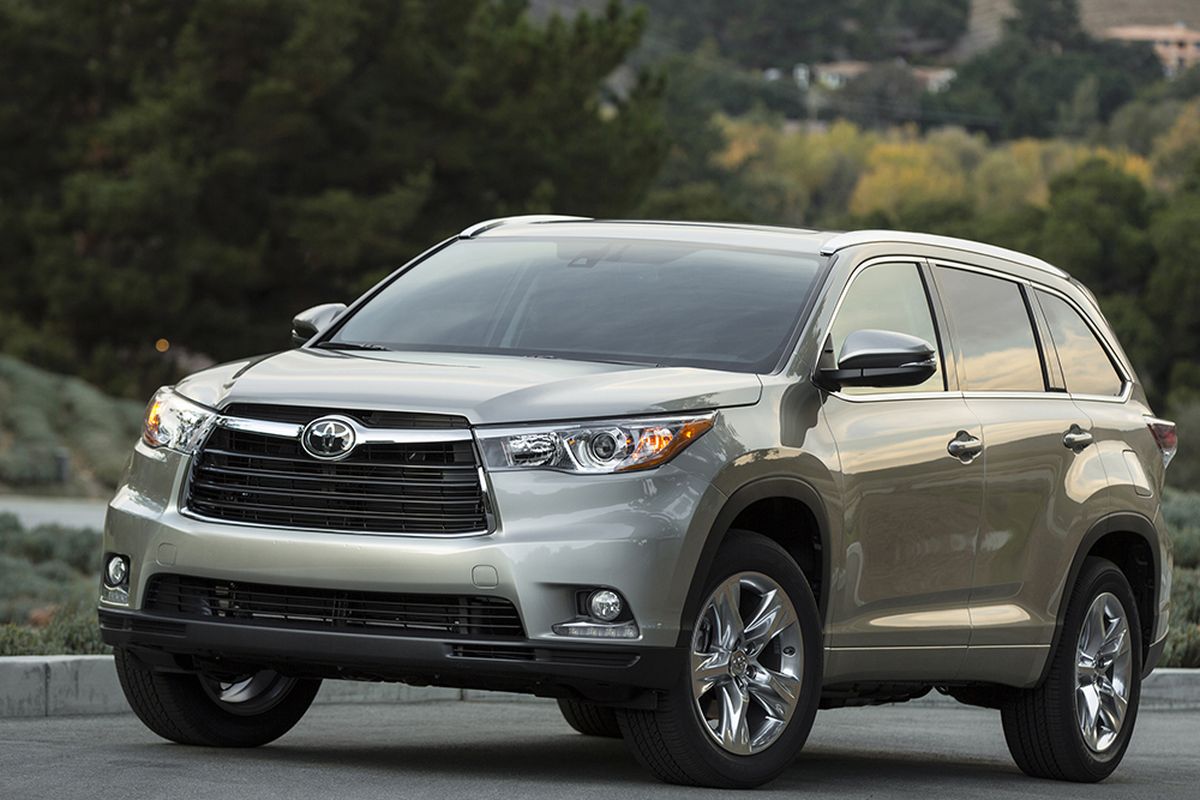Don Adair: Highlander still tops segment it helped create

It’s not much of a stretch to see Toyota’s Highlander as emblematic of today’s auto industry.
When it debuted in 2001, the five-passenger Highlander was the industry’s first midsize crossover. Over the years, it has grown in size, capacity and refinement. Today, it’s available in four trims, in seven- and eight-passenger configurations and with front- or all-wheel-drive. Buyers choose from among three powertrains — two gasoline and a gas-electric hybrid.
In the beginning, the top Highlander powerplant was a V-6 that made 220 hp, could tow up to 2000 pounds and earned EPA ratings of 16 mpg city/21 mpg highway. Today’s lineup includes a hybrid that makes 280 hp and is rated at 28 combined/27 city/28 highway.
Properly equipped, the 2016 Highlander can tow up to 5000 lbs. For 2016, all V-6 models get a towing package as standard gear.
Cabin tech in that original Highlander amounted to an available navigation system. Now, Toyota’s smartphone-based Entune audio system, with a standard 6.1-inch display screen, is standard in Highlander. The optional Entune Plus brings an 8-inch screen and advanced graphics capabilities.
Bluetooth connectivity and a rearview camera are standard on today’s Highlander; neither was available in 2001.
Recently, a push for refinement has driven Highlander’s evolution. Tastefully textured soft-touch surfaces, with stitched seams, have replaced the hard plastics of earlier years. A host of anti-noise measures — acoustical-glass windshield, thicker carpet, more body-cavity insulation — cut wind and road noise. Hydraulic engine mounts and a heavily sealed body structure reduce vibration.
Highlander’s family orientation shows itself in an abundance of ways. Cupholders proliferate, a clever knick-knack shelf lines the lower dash and the center console/armrest conceals an oversized storage bin.
An available Driver Easy Speak feature lets front-seat occupants use their inside voices when addressing those in the rear, courtesy of a front-mounted microphone and the audio system’s rear speakers.
As its wheelbase has grown, so has Highlander’s ride quality. Compliant suspension settings smooth out rough road surfaces. And, though shoppers in this segment aren’t looking for performance thrills, the Highlander handles well for what it is.
Toyota’s AWD system splits torque front and rear. My AWD tester was equipped with Toyo Open Country all-season tires, which were reassuringly surefooted on roads made slick by hard-packed snow.
Highlander powerplants include a 185-horsepower, 2.7-liter four that’s paired with a six-speed automatic and can be had only with FWD. An optional 3.5-liter V-6 makes 270 and is mated with the automatic. The 280-hp Hybrid is the family’s most powerful — and fuel efficient — model. It comes only with AWD and a continuously variable transmission. The Hybrid is available only in the top-level Limited ($48,770) and Limited Platinum ($51,385) trims.
The Highlander is an easy car to live with. Excellent seats and ideal sight lines make for a comfortable, low-stress drive. User-friendly cabin tech simplifies advanced communications for everyday drivers. Even the CVT in our Hybrid tester was less annoying than most.
No car can stand in for an entire industry but, as much as any other rig, Highlander has tracked the changes.
Contact Don at don@dadair.com, or visit www.dadair.com.
2016 Toyota Highlander Hybrid Limited Platinum
Vehicle base price: $39,890
Trim level base price: $50,240
As tested: $53,726
Options included pre-collision system with dynamic radar cruise control; lane departure alert; automatic high-beam headlights; panoramic moonroof; heated steering wheel; heated second-row captain’s chairs; remote engine start; tow receiver hitch with wiring harness; running boards; rear bumper protector; four-seasons floor mat package; cargo cross bars
Tow rating: 5,000 lbs
EPA rating: 28 combined/27 city/28 highway
Regular unleaded fuel specified
